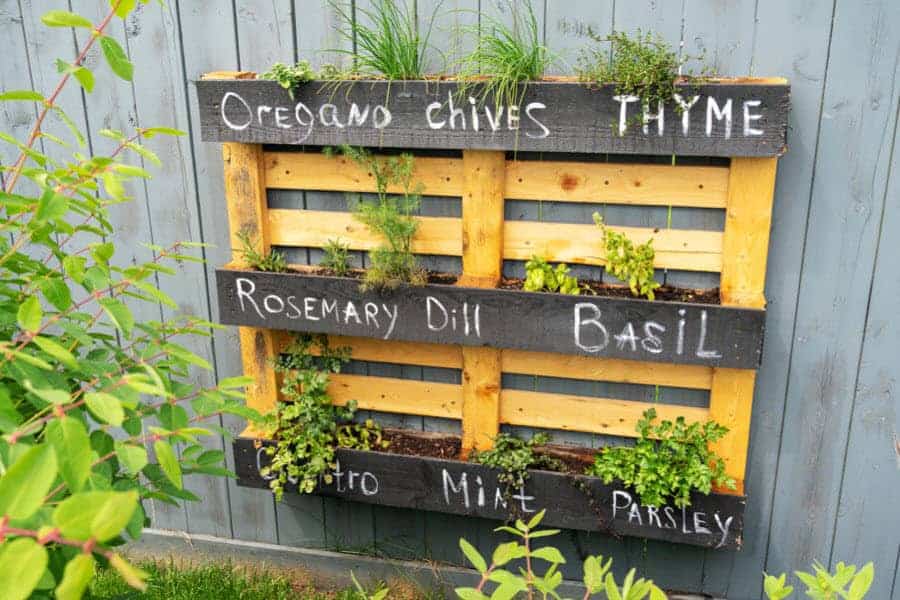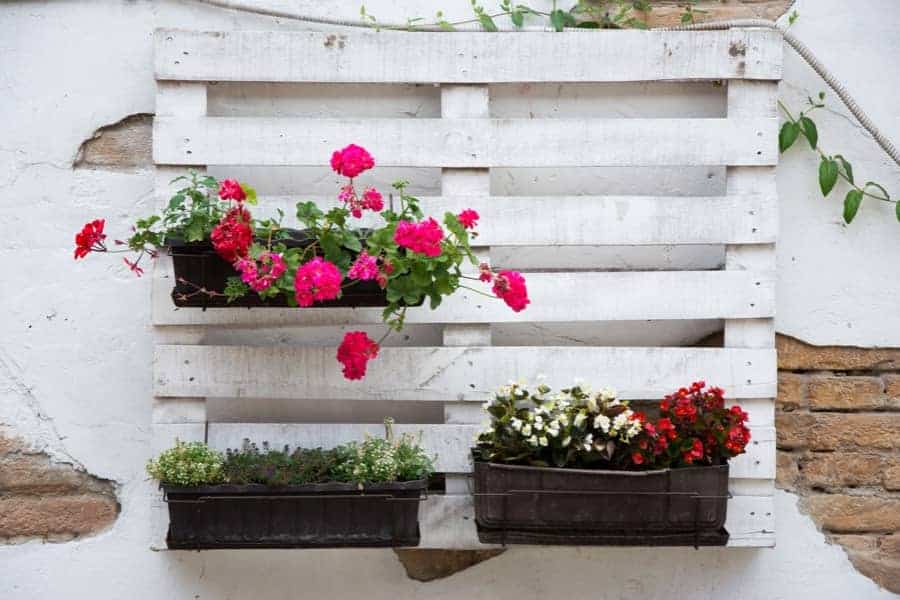
If you are doing up your garden, pallets are a great resource that can help you keep the budget down and supply you with plenty of wood – but if you just stick them in the ground, they won’t last well. Let’s find out how to treat pallets for garden use!
You can treat pallets by:
1. Cleaning the wood thoroughly
2. Breaking the pallet up into parts
3. Sanding the pallet wood
4. Applying a weatherproofing sealant that will keep out the water.
It’s important to prepare pallets properly before using them in your garden, so let’s look at treating pallets to ensure they are suitable for use outside.
Why Should You Treat Pallets For Garden Use?
To be clear, some people don’t bother to treat pallets, but untreated pallets will not last for long outdoors, and will often end up rotting after just a year or two of being exposed to the elements. It is best to treat pallets to make them more durable, or you will find that you need to replace the pallets before much time has passed.
How To Treat Pallets For Garden Use?
So, let’s start looking at the correct method for treating your pallets to ensure they are ready for use in the garden. This method will stay approximately the same no matter what you plan to use the pallet for.
#Step-1: Clean The Pallet
The first thing you should do is clean up the pallet so that it’s easy to handle. Do this with care so you don’t scratch yourself on any splinters, staples, or protruding nails. You can scrub the pallet down with soap and water.
Don’t worry if there is any dirt that you can’t get rid of at this point; you can sand it down later. The idea is just to get the wood reasonably clean so that it can be handled easily.
#Step-2: Break It Up
When you’ve worked out the best way to reclaim the wood from the pallet, break it up. You will need tools to remove the nails that hold it together. Make sure you wear suitable safety equipment, like gloves, so that you don’t risk cutting yourself.
Break the pallet down into the desired parts, and set aside the bits you won’t be using. There is no point in wasting your time or materials on these parts, so separating them out at this stage is a good idea.
#Step-3: Sand It
Next, take the wood that you will be using, and sand it down. Use a mask while doing this; you shouldn’t inhale dust from pallets. Use coarse sandpaper to begin with, taking off the splinters and rough edges, and then swap for finer sandpaper.
The finer sandpaper will create a grip for the varnish or paint to get into, ensuring that it adheres well and will last for years.
#Step-4: Paint Your Pallet
Now it’s time to weatherproof the wood. You should do this before assembling your pallet into its new shape so you can ensure that all parts of it have been coated. Take your chosen medium and stir it according to the manufacturer’s instructions. Apply a thin coat to the pallet’s surface, and allow it to dry before adding a second coat.
Most people apply at least two coats, although this will depend on what material you are using for weatherproofing. Normally, the more coats you apply, the longer the wood should last, because a thick coating will take longer to wear away and the wood will stay waterproof for longer.
How Long Will Pallets Last Outside?

Untreated pallets will probably start breaking down after a few months of being outside, although some may last for a year or two, depending on your local environment. If you get a lot of rain or fluctuating temperatures, the wood is likely to rot faster than if you live somewhere dry or temperate.
Treated pallets should last for several years, although the longevity again depends on your climate to some degree. Choose a high quality treatment and reapply it every few years, and the pallets should last significantly longer.
Conclusion
Treating pallets for use in the garden is a fairly straightforward process, but it’s important to do this before you use the pallet. Untreated pallet wood will be rough and unpleasant, and will not last very well because it will quickly absorb moisture from the ground and start to rot. Treating the wood should ensure that it lasts for much longer.
